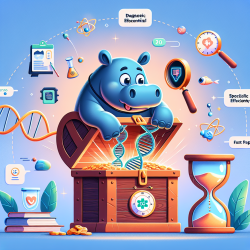Understanding Anxiety in Adolescents: Key Insights for Practitioners
As practitioners dedicated to improving outcomes for children, it is crucial to understand the nuances of anxiety in adolescents. A recent study titled The role of anxiety and gender in anticipation and avoidance of naturalistic anxiety-provoking experiences during adolescence: An ecological momentary assessment study provides valuable insights into how anxiety manifests differently across genders and how it influences anticipation and avoidance behaviors.
Key Findings from the Study
The study utilized ecological momentary assessment (EMA) to explore how anxiety affects adolescents aged 8-18. A significant finding was the interaction between gender and anxiety levels. Anxious girls were found to report greater anticipatory anxiety and worry about future experiences compared to their male counterparts. However, when it came to avoidance behaviors, the study found that these were prevalent across both genders among anxious youth.
Implications for Practitioners
Understanding these findings can significantly impact how practitioners approach therapy and support for adolescents dealing with anxiety. Here are some strategies to consider:
- Gender-Specific Approaches: Recognize that anxious girls may require interventions that specifically address anticipatory anxiety and worry. Tailoring approaches to account for these differences can enhance therapeutic outcomes.
- Focus on Avoidance Behaviors: Since avoidance is a common response among anxious youth, irrespective of gender, strategies should include helping adolescents face anxiety-provoking situations in a controlled and supportive manner.
- Utilize EMA Techniques: Incorporating EMA in therapy can provide real-time insights into the specific anxiety-inducing experiences of each adolescent, allowing for more personalized interventions.
Encouraging Further Research
While this study offers significant insights, it also highlights the need for further research into the complex interplay of anxiety, gender, and avoidance behaviors. Practitioners are encouraged to engage in or support research efforts that explore these dynamics further, potentially leading to more effective therapeutic strategies.
To read the original research paper, please follow this link: The role of anxiety and gender in anticipation and avoidance of naturalistic anxiety-provoking experiences during adolescence: An ecological momentary assessment study.










